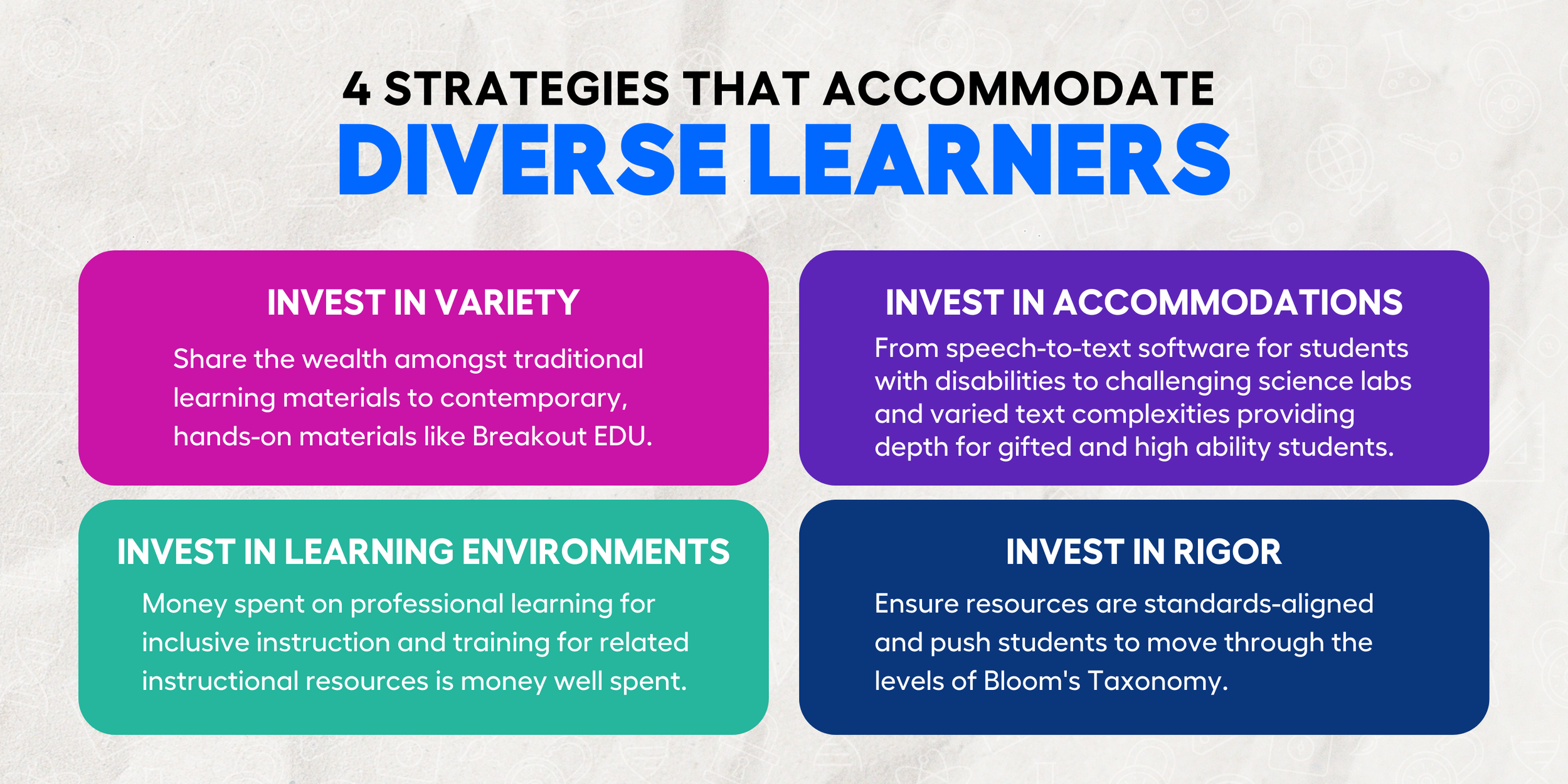Meeting the Needs of Diverse Learners
From students with high ability to those with learning differences and every child in between, these are the critical strategies to accommodate diverse learners in 2022-2023
This upcoming school year, leaders will continue navigating the lingering consequences of the pandemic while maintaining rigorous teaching and learning expectations to meet the standards and prepare for high-stakes state assessments. A herculean task to be done within the context of escalating student truancy, a teacher shortage, increasing classroom diversity, and looming fiscal cliffs. This is not a job for the weak.
Investing in quality instructional resources is the smart way to steer your school or district through these myriad obstacles.
The nexus of any school is the classroom, it’s where the magic happens, and high-quality, standards-aligned resources increase student engagement (while reducing teacher burnout) which is key for learning… and learning is key for achievement… and achievement is the goal of any educational institution.
An ongoing challenge for teachers is creating engaging learning activities rigorous enough to meet the needs of their diverse learners. To support teachers in this important work, it is essential to provide them with the resources and training they need to be successful.
Examples of Diverse Learners
Diverse learners is an umbrella term used to describe students hailing from a wide variety of backgrounds and experiences. These may be related to race or ethnicity, socioeconomic status, or regional or local cultural differences. It can even refer to a student's home life and/or intellectual capabilities.
Picture any classroom in your school or district and think of the students sitting in the seats. Statistically, every classroom has students who come from single-parent homes (in 2021, 28% of students), live in extended family homes, and students living with non-biological caregivers. In 2020, 16% of the students in your classroom come from poverty. Every classroom serves students with learning differences - students with disabilities as well as those who are gifted or high achieving. And it is more than likely there are students in the classroom who are first or second generation immigrants.
Each student has unique needs in the classroom. Some need more support from teachers to catch up to grade level expectations while others crave autonomy and creative problem solving opportunities.
There are limited funds to spend on instructional resources and it is the responsibility of administrators to ensure those dollars are spent wisely - meaning there is a long term/recurrent return on investment and those investments ultimately benefit the students and community writ large.
Strategies that Accommodate Diverse Learners
What teachers need most from administrators to meet the needs of diverse learners is resources. They can analyze data, collaborate with colleagues, assess students, and plan lessons - but none of that matters without high-quality instructional tools at their disposal to boost engagement and drive results.
Here are 4 key investment considerations when purchasing instructional resources to support diverse learners:
4 Strategies that Accommodate Diverse Learners Infographic
Invest in Variety
Because your classrooms are diverse, it makes sense to diversify your spend. Share the wealth amongst traditional learning materials and supports like books to contemporary, hands-on materials like Breakout EDU games. Remember, teachers' instructional styles vary as well. So load up the supply room with activities and materials to satiate every need!
Invest in accommodations and modifications
Every student, regardless of ability, benefits from the occasional accommodation or modifications. From large grip pencils and speech-to-text software for students with disabilities to challenging science labs and varied text complexities providing depth for gifted and high ability students. Equip teachers to serve students at every ability level.
Invest in a learning environment
Not every teacher is naturally equipped to create an inclusive atmosphere in their classroom. To do so requires training and experience. Inclusive classrooms honoring diverse learners are ones where students care about the material (because they receive connective instruction) and believe their teacher cares about them. Money spent on professional learning for inclusive instruction and training for related instructional resources is money well spent.
Invest in rigor
Diverse learners are never a reason to sacrifice rigor. Every student is capable of incredible things. When purchasing instructional resources, ensure they are standards-aligned and push students to move through the levels of Bloom's Taxonomy.
Final Thoughts
It is no secret that engaged classrooms:
Implement activities responsive to student needs and interests
Build structure and routines with clear expectations for participation
Prioritize student accountability and self-efficacy to boost confidence
Create lessons based on state standards and assessment data
Adam Fletcher, founder of the Freechild Institute for Youth Engagement, famously defined student engagement this way: “students are engaged when they are attracted to their work, persist despite challenges and obstacles, and take visible delight in accomplishing their work.” Breakout EDU knows increased engagement translates to deeper learning. With our library of standards-aligned games, educators can create a learner-centered experience allowing diverse populations of students to work together at their own pace, think conceptually, and utilize prior knowledge for deeper comprehension.
Once you experience a Breakout EDU game, you'll see why our games are the key to unlocking the love of learning in each and every student!





